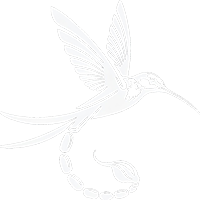Think for yourself, question authority
Foundational Thinking Skills
Critical Thinking
- Paul-Elder Model: Evaluate reasoning for clarity, accuracy, relevance, and logic.
- Socratic Method: Challenge assumptions and explore principles through questioning.
Logical Reasoning
- Deductive Reasoning: General principles to specific conclusions.
- Inductive Reasoning: Specific observations to general conclusions.
Creative and Lateral Thinking
- Lateral Thinking: Explore new ideas creatively.
Six Thinking Hats
- Red: Feelings and intuition.
- White: Objective data.
- Black: Risks and challenges.
- Yellow: Benefits.
- Green: Alternative solutions.
- Blue: Process and organization.
Problem-Solving Frameworks
- Scientific Method: Formulate and test hypotheses.
- Root Cause Analysis: Identify underlying causes.
- Heuristic Analysis: Apply rules of thumb.
Decision-Making and Planning
- Decision Tree Analysis: Map decisions and potential outcomes.
- Scenario Planning: Explore future scenarios.
Systems Thinking and Analysis
- Systems Thinking: Analyze interactions within a system.
- Causal Loop Diagrams: Map feedback loops and causal relationships.
- Complexity Theory: Analyze complex systems.
- Value Chain Analysis: Assess value added at each stage.
Information Processing and Visualization
Bloom’s Taxonomy
- Remember: Recall facts.
- Understand: Comprehend information.
- Apply: Use information in new situations.
- Analyze: Break down information.
- Evaluate: Judge information’s validity.
- Create: Propose new ideas.
- Mind Mapping: Visualize information and relationships.
- Argument Mapping: Visualize arguments and evidence.
Specialized Approaches
- Fermi Estimation: Approximate calculations.
- Bayesian Thinking: Update beliefs based on new evidence.
- SWOT Analysis: Assess strengths, weaknesses, opportunities, and threats.
- Critical Realism: Examine assumptions and context.
- Design-Based Research: Test solutions in real-world contexts.
- Dialectical Thinking: Explore contradictions and synthesize.
- Collaborative Inquiry: Engage with others to solve issues.

Innovation via TRIZ, Restructured
Principles of Space and Time
These principles deal with the physical arrangement of objects and the manipulation of time.
- Segmentation: Divide into independent parts.
- “Nested Doll”: Place objects inside each other.
- Another Dimension: Move object in 2D or 3D space.
- Skipping: Perform actions at high speed.
Principles of Structure and Form
These principles focus on modifying the shape, structure, and material composition of objects.
- Local Quality: Vary structure or environment.
- Asymmetry: Change shape from symmetrical to asymmetrical.
- Spheroidality - Curvature: Use curves instead of straight lines.
- Flexible Shells and Thin Films: Use flexible instead of rigid structures.
- Composite Materials: Use multiple materials.
Principles of Function and Action
This category deals with how objects function and interact, and how actions can be modified for better results.
- Taking Out: Separate interfering parts or properties. Isolate necessary part.
- Merging: Combine similar objects or functions.
- Universality: Make one part perform multiple functions.
- Preliminary Anti-action: Use counteractions to control harmful effects.
- Preliminary Action: Pre-change an object.
- ‘The Other Way Round’: Invert the action.
- Dynamics: Allow for adaptable characteristics.
- Partial or Excessive Actions: Use slightly less or more of the solution.
- Mechanical Vibration: Induce oscillations.
- Periodic Action: Use periodic instead of continuous action.
- Continuity of Useful Action: Maintain continuous work.
- Self-service: Make an object serve itself.
- Discarding and Recovering: Eliminate or modify used parts.
Principles of Condition and Environment
These principles consider the influence of external conditions and the environment on the problem.
- Anti-weight: Counteract weight with other objects.
- Beforehand Cushioning: Prepare emergency measures.
- Equipotentiality: Limit position changes.
- “Blessing in Disguise”: Use harmful factors for good.
- Pneumatics and Hydraulics: Utilize gas and liquid components.
- Porous Materials: Incorporate porosity.
- Color Changes: Change object or environment color.
- Homogeneity: Use same materials for interacting objects.
- Parameter Changes: Change an object’s physical state.
- Phase Transitions: Utilize phenomena during phase changes.
- Thermal Expansion: Utilize expansion or contraction.
- Strong Oxidants: Use oxygen-enriched air.
- Inert Atmosphere: Use an inert environment.
Principles of Information and Resources
This group focuses on using information, feedback, and resource management to improve a system.
- Feedback: Introduce feedback for improvement.
- ‘Intermediary’: Use an intermediary object or process.
- Copying: Use simple copies instead of originals.
- Cheap Short-Living Objects: Replace expensive with multiple cheap objects.
- Mechanics Substitution: Use electromagnetic fields.
